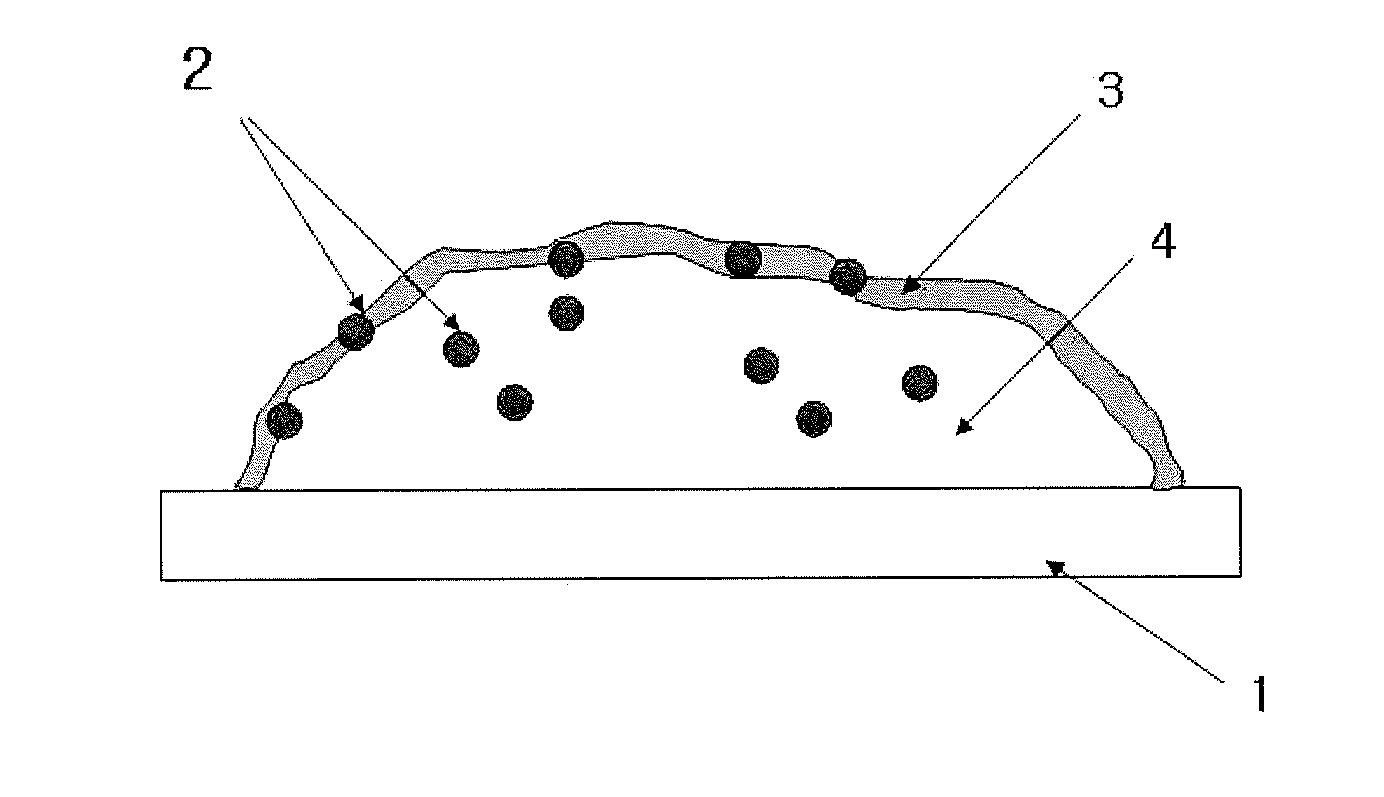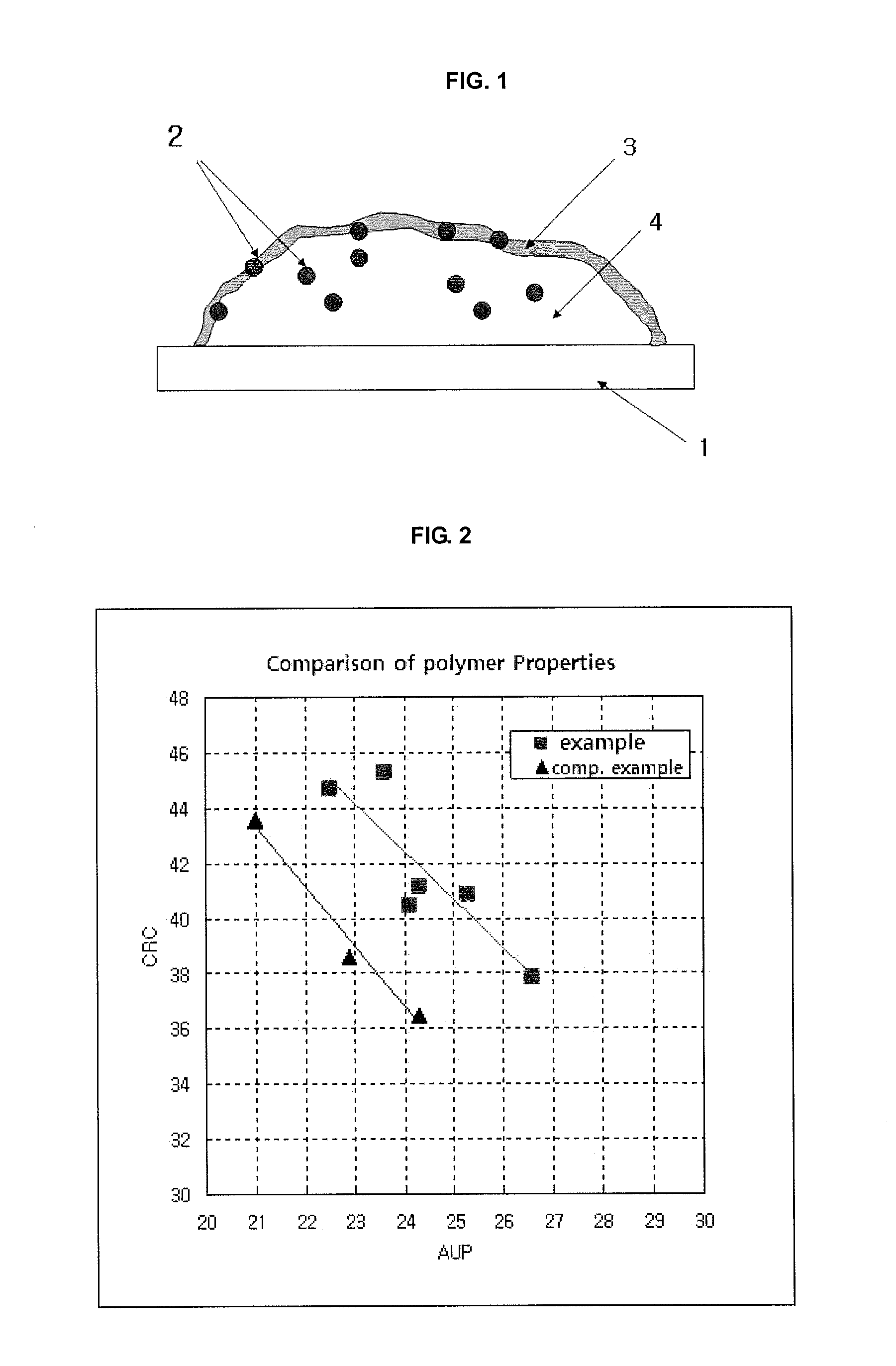Process for Preparing Super Absorbent Polymers
a super absorbent polymer and polymer technology, applied in the field of super absorbent polymer preparation, can solve the problems of difficult preparation of super absorbent polymers with a low level of moisture content, difficult drying process of super absorbent polymers, and inability to easily discharge moisture or heat in the polymer, so as to facilitate the drying of hydrogel polymers, effectively remove residual moisture, and generate more efficiently
- Summary
- Abstract
- Description
- Claims
- Application Information
AI Technical Summary
Benefits of technology
Problems solved by technology
Method used
Image
Examples
example 1
[0054]100 g of acrylic acid, 1 g of nanoclay particles (laponite: trade name XLG, ROCKWOOD SPECIALTIES CO. LTD) with a diameter of 30 nm as a non-reactive fine particle, 0.1 g of polyethylene glycol diacrylate as a crosslinker, 0.033 g of diphenyl(2,4,6-trimethylbenzoyl)-phosphine oxide as an initiator, 38.9 g of caustic soda (NaOH), and 103.9 g of water were mixed to give an aqueous solution of a monomer composition with a monomer concentration of about 50% by weight.
[0055]Then, the aqueous solution of the monomer composition was introduced onto a continuously moving conveyor belt and irradiated with UV rays (irradiation amount: 2 mW / cm2) at 50° C. for 2 minutes to carry out a UV-induced polymerization.
[0056]The hydrogel polymer resulting from the UV-induced polymerization was cut in a size of 5 mm×5 mm, dried in an heat wave dryer at 150° C. for 5 hours, and ground by using a pin-mill grinder, and then the resulting product was sieved to be prepared as a super absorbent polymer wi...
example 2
[0058]A polymer was prepared with the same method as Example 1 except for using nanoclay particles (laponite: trade name XLS, ROCKWOOD SPECIALTIES CO. LTD) with a diameter of 30 nm as a non-reactive fine particle.
example 3
[0059]A polymer was prepared with the same method as Example 1 except for using nanoclay particles (montmorilonite: trade name Na-MMT) with a diameter of 200 nm as a non-reactive fine particle.
PUM
| Property | Measurement | Unit |
|---|---|---|
| diameter | aaaaa | aaaaa |
| temperature | aaaaa | aaaaa |
| temperature | aaaaa | aaaaa |
Abstract
Description
Claims
Application Information
 Login to View More
Login to View More - R&D
- Intellectual Property
- Life Sciences
- Materials
- Tech Scout
- Unparalleled Data Quality
- Higher Quality Content
- 60% Fewer Hallucinations
Browse by: Latest US Patents, China's latest patents, Technical Efficacy Thesaurus, Application Domain, Technology Topic, Popular Technical Reports.
© 2025 PatSnap. All rights reserved.Legal|Privacy policy|Modern Slavery Act Transparency Statement|Sitemap|About US| Contact US: help@patsnap.com


